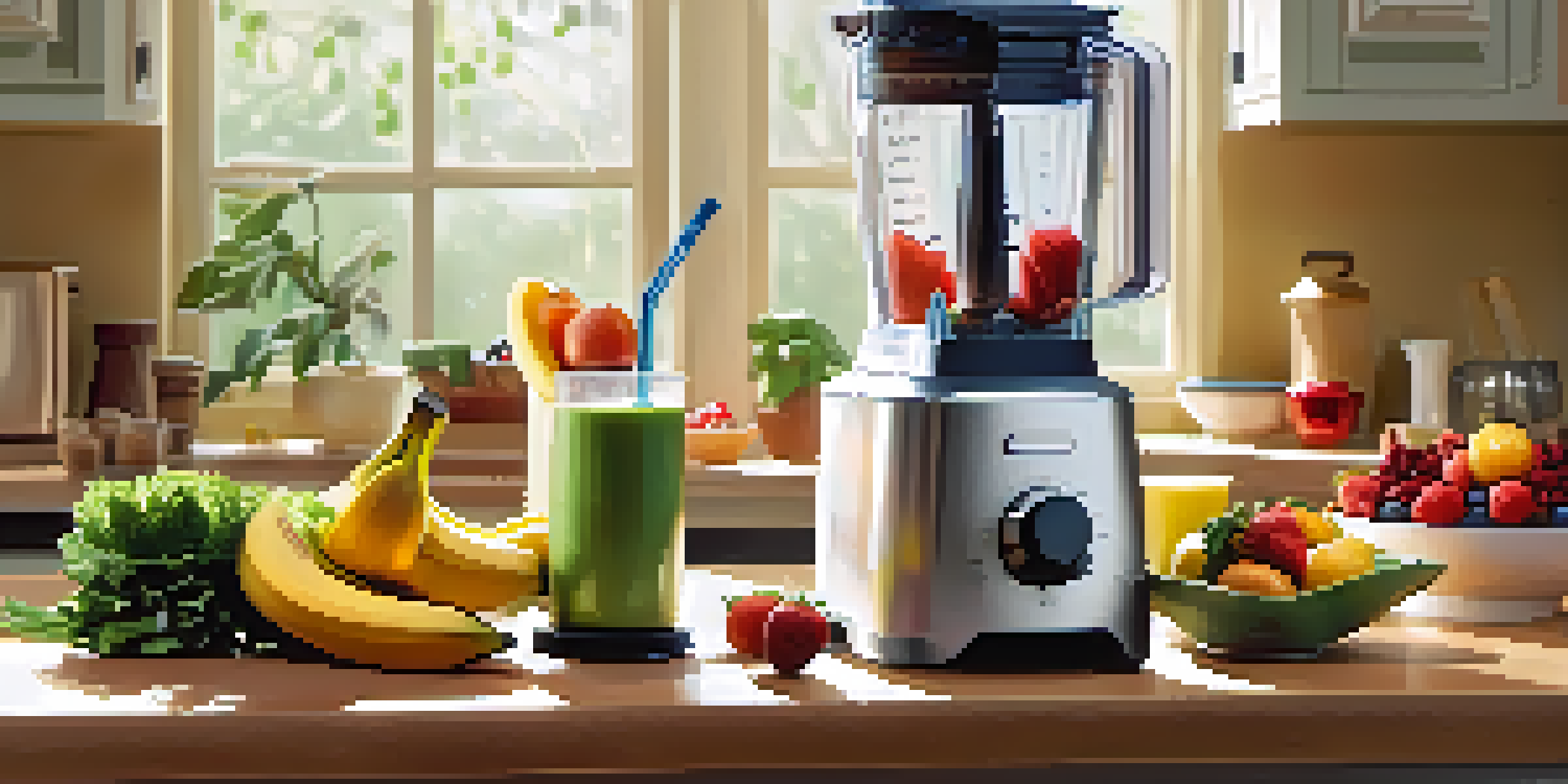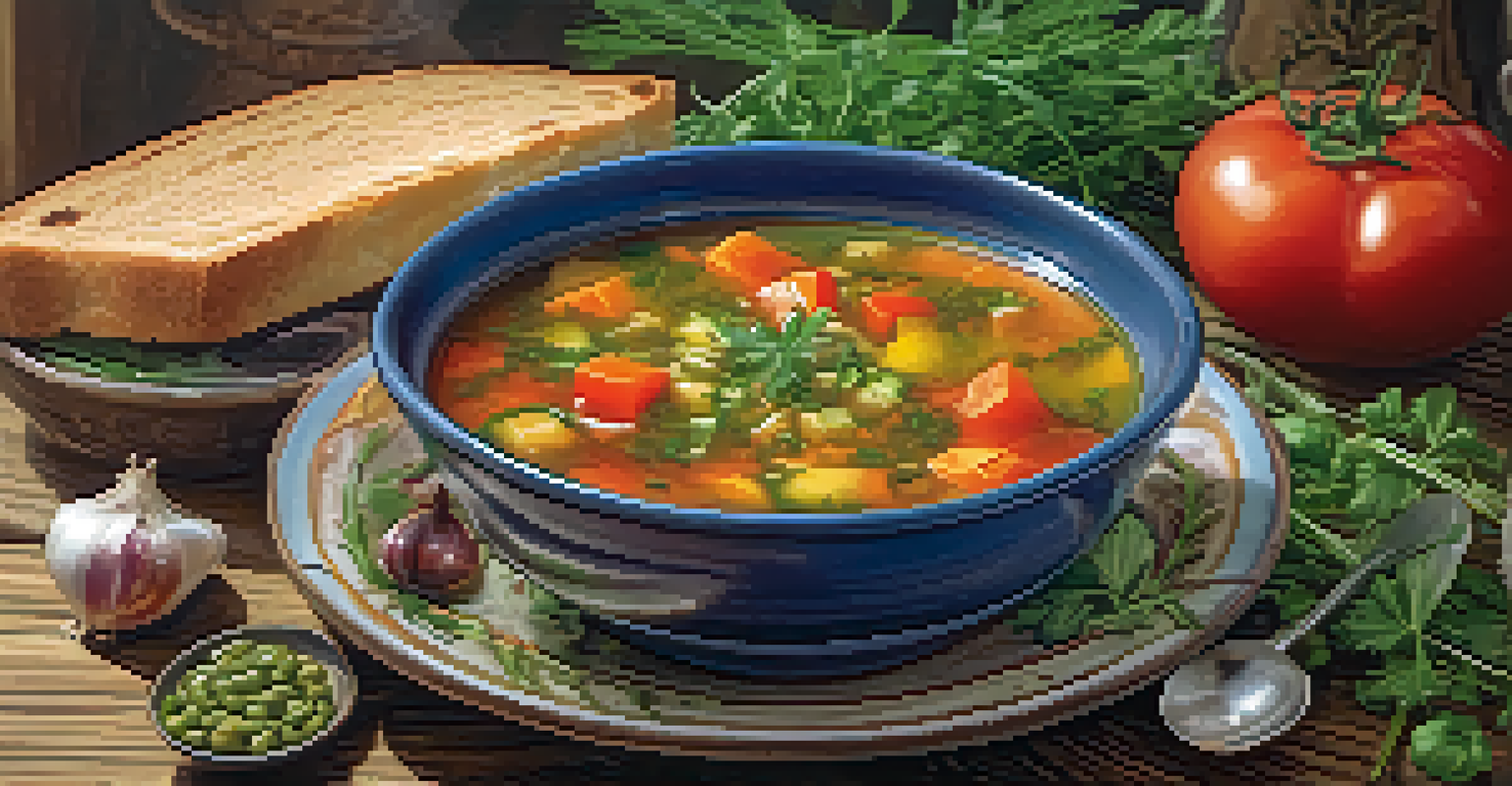Blending Basics: Creating Smoothies and Soups with Ease

Understanding Your Blender: The Heart of Blending
Every great smoothie or soup starts with a good blender. Understanding the features of your blender can make a significant difference in your blending experience. From variable speeds to pulse functions, knowing how to utilize these features allows for more control over texture and consistency.
Cooking is like love. It should be entered into with abandon or not at all.
For instance, a high-speed blender can create silky-smooth soups, while a more basic model might leave you with a chunkier texture. If you’re blending leafy greens for a smoothie, a powerful motor can help break down those fibrous ingredients effortlessly. It’s all about matching your blender's capabilities to the recipes you want to create.
So, take a moment to familiarize yourself with your blender. Experiment with its settings and find out what works best for the ingredients you love. This foundational knowledge will empower you to create delicious blends with ease.
Choosing the Right Ingredients: Fresh vs. Frozen
When creating smoothies and soups, the ingredients you choose can dramatically impact flavor and nutrition. Fresh fruits and vegetables are often bursting with flavor, while frozen options can offer convenience and a longer shelf life. Both have their advantages, so it’s essential to know when to use each.

For smoothies, fresh bananas or berries can make a sweet, creamy base, while frozen spinach can provide an easy way to sneak in greens without compromising taste. In soups, fresh tomatoes can deliver vibrant flavors, while frozen stock or vegetables can save time without sacrificing quality.
Master Your Blender Features
Understanding your blender's settings can enhance your blending experience and help achieve perfect textures.
Ultimately, the choice between fresh and frozen ingredients comes down to your personal preference and what you have available. Experiment with both to find your ideal combination and discover new flavors along the way.
Balancing Flavors: The Key to Delicious Blends
Creating a delicious smoothie or soup is all about balance. You want to harmonize the flavors of sweet, savory, and even a hint of acidity to elevate your dish. When making a smoothie, for example, pairing sweet fruits like mango with a tart yogurt can create a delightful contrast.
The only real stumbling block is fear of failure. In cooking, you’ve got to have a what-the-hell attitude.
In soups, adding a splash of lemon juice or vinegar can brighten up the flavors, while herbs and spices can introduce depth. Think of flavor balancing as composing a song where each ingredient plays a role in creating a harmonious blend.
Don't hesitate to taste as you go! Adjusting the flavors mid-blend can lead to delightful surprises and a more personalized dish. Trust your palate and have fun experimenting with different flavor combinations.
Texture Matters: Achieving the Perfect Consistency
Texture plays a crucial role in the enjoyment of both smoothies and soups. For smoothies, you might prefer a thick, creamy texture that feels indulgent, while soups may need to be smooth and velvety or chunky and hearty, depending on your taste.
To achieve the desired texture in smoothies, consider the ratio of liquid to solid ingredients. Adding a bit more liquid can help blend everything smoothly, while less can create a thicker consistency. In soups, blending just half the mixture and leaving the rest chunky can create an appealing contrast.
Fresh vs. Frozen Ingredients
Choosing between fresh and frozen ingredients can significantly affect the flavor and nutrition of your smoothies and soups.
Experiment with different blending times and speeds to find your sweet spot. Remember, the goal is to make a blend that not only tastes great but also feels satisfying to enjoy.
Nutritional Boosts: Adding Superfoods to Your Blends
Incorporating superfoods into your smoothies and soups can pack a nutritional punch without altering the flavor too much. Ingredients like chia seeds, flaxseeds, or spirulina can enhance the health benefits of your blends, making them even more nourishing.
For example, adding a tablespoon of nut butter can increase protein content in smoothies, while incorporating lentils in soups can boost fiber and protein levels. These little additions can transform an ordinary blend into a powerhouse of nutrition.
Be mindful of the quantity you add; a little goes a long way! Start with small amounts, taste, and adjust as needed. You’ll not only enjoy the flavors but also reap the health benefits of these supercharged ingredients.
Creative Combinations: Thinking Outside the Blender
While traditional smoothies and soups typically feature common ingredients, don’t be afraid to get creative! Try incorporating unexpected flavors like beets for a vibrant smoothie or coconut milk for a tropical twist in your soup. The possibilities are endless.
Consider using spices or herbs you enjoy in cooking, such as ginger or cilantro, to add a unique flair to your blends. You might discover a new favorite combination that surprises and delights your taste buds.
Experiment for Unique Flavors
Getting creative with unexpected ingredients and spices can lead to delightful new combinations in your blends.
Aim to experiment regularly, and keep a journal of your favorite recipes and adjustments. This will help you refine your blending skills and inspire you to explore new culinary territory.
Easy Cleanup: Making Blending a Breeze
One of the biggest deterrents to blending at home can be the dreaded cleanup. However, with a few simple strategies, you can make the process quick and painless. Start by rinsing your blender immediately after use; this prevents food from drying and sticking.
Many blenders are dishwasher safe, but if yours isn't, fill it with warm water and a drop of dish soap, then blend for a few seconds. This quick wash can save you time and effort later on.

Additionally, consider prepping ingredients in advance and storing them in labeled containers. This organization not only streamlines the blending process but also makes your kitchen feel less chaotic.